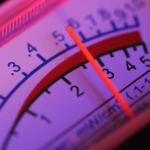“Resistance” is a fundamental concept in the field of electricity and electronics, central to understanding how electric circuits operate. It refers to the opposition that a material or a device offers to the flow of electric current. Resistance is a property that helps control and manage the flow of electric charges in electrical circuits.
Understanding Electric Current:
To appreciate resistance, it’s important to first understand electric current. Electric current is the flow of electric charges (usually electrons) through a conductor, such as a wire. The amount of current that flows through a conductor depends on the voltage applied across it and the resistance of the conductor.
Ohm’s Law:
The relationship between voltage, current, and resistance is described by Ohm’s Law, a fundamental principle in electronics and electrical engineering. Ohm’s Law states that the current through a conductor between two points is directly proportional to the voltage across the two points and inversely proportional to the resistance between them. This relationship is commonly written as:
[ I = \frac{V}{R} ]
where ( I ) is the current (measured in amperes), ( V ) is the voltage (measured in volts), and ( R ) is the resistance (measured in ohms).
The Concept of Resistance:
Resistance is caused by the collisions of the current-carrying charged particles with the fixed particles of the conductor. The higher the resistance, the harder it is for the current to flow through the material. Different materials have different levels of resistance. Conductors, like copper and aluminum, have low resistance and allow current to flow easily. Insulators, like rubber and glass, have high resistance and restrict the flow of current.

Want to Slash Your EMF Health Risks?
Want to Slash Your EMF Health Risks?
Good! Learn the one small change you should make right now.
Factors Affecting Resistance:
Several factors determine the resistance of a material:
- Material: Different materials have different inherent resistivities. Conductors have low resistivity, while insulators have high resistivity.
- Length: The longer the conductor, the higher the resistance. This is because the electrons have to travel a greater distance, encountering more collisions along the way.
- Cross-Sectional Area: A wider conductor has a lower resistance than a narrower one. More space allows more electrons to flow through the material at the same time.
- Temperature: For most materials, resistance increases with temperature. As temperature rises, atoms vibrate more vigorously, increasing the likelihood of collisions with moving electrons.
Units of Resistance:
The unit of resistance is the ohm, symbolized by the Greek letter omega (Ω). One ohm is defined as the resistance between two points in a conductor where one volt of potential difference will maintain a current of one ampere.
Applications and Importance:
Resistance is a critical aspect of designing and understanding electrical and electronic circuits. It’s crucial in:
- Determining the current flow in circuits.
- Designing circuits with desired properties.
- Controlling the voltage and current in electronic devices.
- Developing various electronic components like resistors, which are used to manage current flow in circuits.







